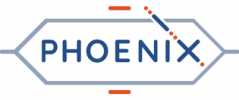
The EU-funded PHOENIX project is seeking to create the next generation of PICs by working with new material platforms, such as barium titanate on silicon nitride. These platforms will be optimised with metal–insulator transition materials and epitaxial ferroelectrics, such as vanadium oxides, offering more efficient control of optical signals. Researchers will also look at ways to improve the manufacturing of oxide thin-films with molecular beam epitaxy. The project will demonstrate the new chips over four use cases: fully homomorphic encryption, 5G infrastructure, deep neural network inference and deep neural network training.
In PHOENIX, we create the next generation of compact photonic integrated circuits (PIC) offering a continuous and efficient control over optical signals. A barium titanate (BTO) on silicon nitride (SiN) platform will be optimized to enable novel functionalities and produce enhanced PICs. The novel functionalities stem from a combination of materials having a metal-insulator transition with epitaxial ferroelectrics. Vanadium oxides (VOx) deliver a maximum contrast in absorption while Barium Titanate (BTO) offers an efficient and programmable control of the phase of an optical signal through Pockels and photorefractive effects.
The developed technologies will be demonstrated in four uses cases in high-impact emerging applications: 1) fully homomorphic encryption, 2) 5G infrastructure, 3) inference of deep neural networks and 4) training of deep neural networks.
The project has four main objectives: a) to provide novel photonic technologies with enhanced functionalities thanks to the integration of VOx and BTO, b) to provide a BTO/SiN waveguide platform for subsequent manufacturing of PICs and an upgraded version of such a platform integrating VOx with the potential to improve their performance and scalability, c) to build up the demonstrators, and d) to advance in the understanding, realization and upscaling of high-quality oxide thin-films by molecular beam epitaxy (MBE) on large area.
The validation of the developed technology will be completed with an extrapolation to benchmark against representative existing systems and a roadmap for photonic-electronic integration. The project will perform a market analysis and a techno-economic evaluation in order to define business models and exploitation plans that ensure the sustainability of the PHOENIX platform to reduce innovation-to market-time and R&I costs for disruptive high-tech SMEs and maximize the impact of the 4 user cases demonstrators
